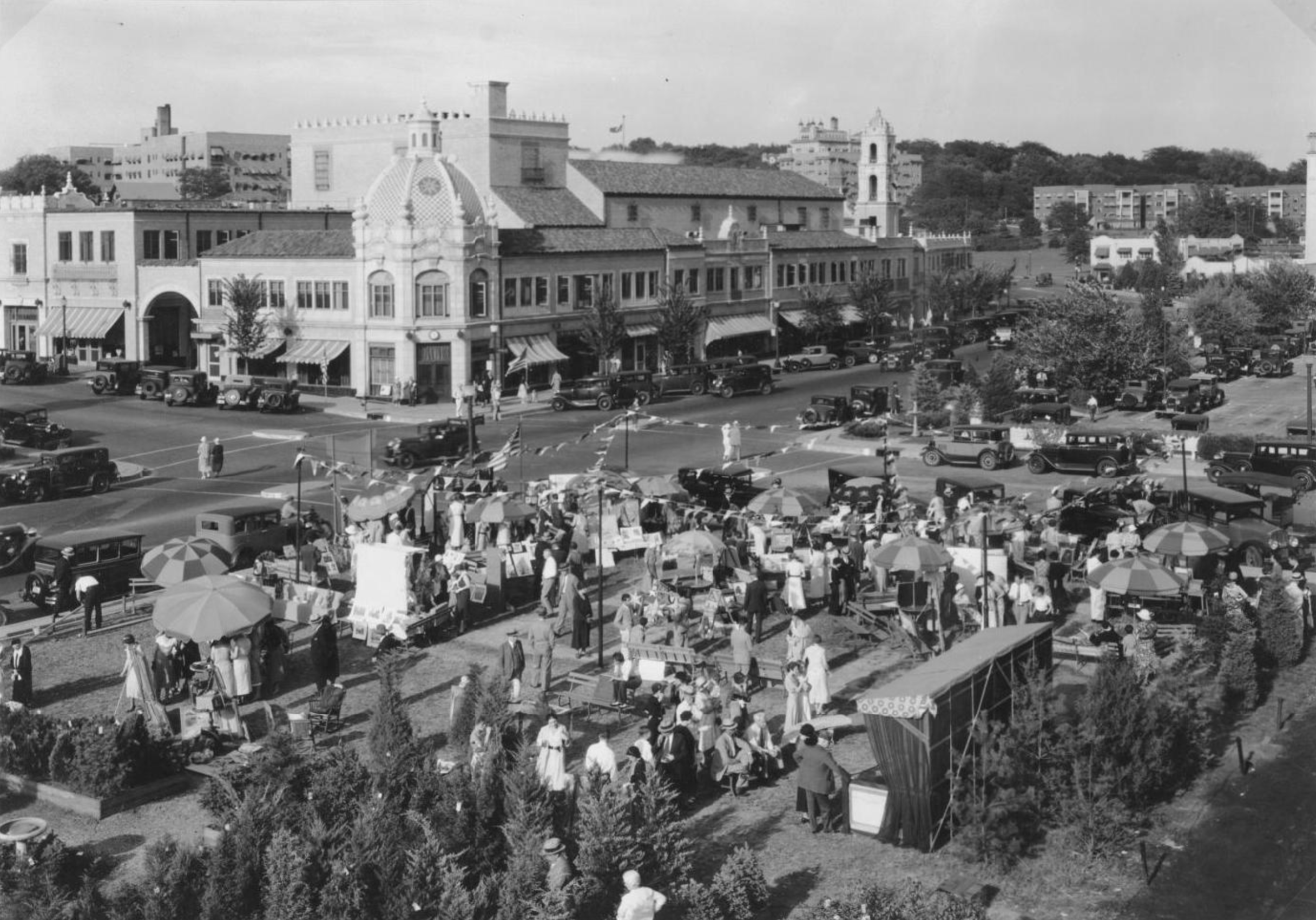The Story of the Plaza Art Fair
1981 Plaza Art Fair. Courtesy: Missouri Valley Special Collections, Kansas City Public Library, Kansas City, MO
Nestled within the elegant architecture and busy streets of Kansas City's Country Club Plaza, the Plaza Art Fair is a long-standing tradition that has grown to become a nationally recognized celebration of art, food, and music. This event has a rich history, beginning during the Great Depression.
A Plan to Lift Spirits During the Great Depression
1935: The 4th Annual Plaza Art Fair at the SW corner of Central and Alameda (now Nichols Rd). Courtesy-SHSMO.
In the early 1930s, as the country struggled with the economic challenges of the Great Depression, the Plaza Merchants Association sought new ways to attract visitors to their shopping district and uplift the community's morale. In 1932, they launched the Plaza Art Fair.
At the time, an empty lot stood at the southwest corner of Nichols Road and Central Street, now the site of Tiffany & Co. Ninety artists gathered there to display their works, with paintings priced between one and ten dollars. To exhibit their art, these early participants used trees and benches as makeshift display stands.
The Plaza Art Fair was more than an art showcase; it became a place for artists to connect with each other and with the public. The first fair was considered a success, leading to its establishment as an annual event.
1988: Nichols Rd east of Pennsylvania. Courtesy: Missouri Valley Special Collections, Kansas City Public Library, Kansas City, MO
Over the decades, the Plaza Art Fair has grown considerably. From a single-lot event, it now spans nine city blocks. In the 1940s, the fair moved to what is now Chandler Courtyard, near The Cheesecake Factory. During those years, artists used basic screens made of chicken wire and faced the uncertainty of the weather.
A significant moment in the fair's history occurred in 1977 when a severe flood hit the Plaza area. Despite the widespread damage and loss, the community came together, cleaning up the area and preparing for the event. Just ten days after the disaster, the Plaza Art Fair took place, highlighting the community’s resilience.
Legacy and Future
Courtesy: plazaartfair.com
Today, the Plaza Art Fair has become a hallmark of the city, featuring over two hundred merchants and a wide range of artwork available for purchase. The event also offers a variety of food from local restaurants and live music performances, adding to the cultural experience.
Throughout its history, the Plaza Art Fair has been a source of inspiration and a valued Kansas City tradition. Even when faced with obstacles, including the COVID-19 pandemic in 2020, the fair has continued to thrive.
As it carries forward, the Plaza Art Fair remains a key event that signals the arrival of fall in Kansas City, leaving attendees with anticipation for what the future of this annual celebration of art and community may bring.



